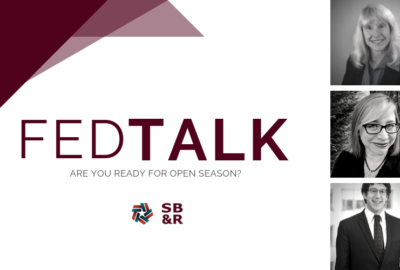
Tammy Flanagan: ‘Your plan might be changing’
Feds need to check their health benefits this open season, even if they don't intend on changing plans; the plans themselves could be changing.
Best listening experience is on Chrome, Firefox or Safari. Subscribe to Federal Drive’s daily audio interviews on Apple Podcasts or PodcastOne.
Open season is upon us and most feds who are happy with their plans will be tempted to let it pass by without reviewing their options. But federal benefits and retirement expert Tammy Flanagan said that’s not a good idea.
“I would encourage everyone to look at your current plan brochure for 2019,” she told the Federal Drive with Tom Temin. “Because even though you might not be changing plans, your plan might be changing.”
Premiums for the available health plans will rise on average 1.5 percent in 2019, Flanagan said. And while some will go down, others will go up much higher than that. In addition, certain benefits, like prescription drug coverage, could change as well.
“If you don’t do anything else, look at your current plan, see how it’s going to go forward into next year and cover the things you’ve been covering the past year,” Flanagan said.
Open season ends Dec. 10. Everything is online at OPM.gov, including links to FEDVIP for dental and vision plans, and FSAFEDS for flexible spending accounts.
Flexible spending accounts are often confused with health savings accounts, she said. FSAs are for employees only, and allow them to set aside up to $2,650 out of their paychecks tax free. This can be used to cover deductibles, copays, and other out of pocket costs. Flanagan said employees considering FSA’s should use how much they spent this year on healthcare as a guide for what they should set aside next year.
Meanwhile, an HSA is for employees or retirees with high deductible health plans. Though they also come out of the paycheck tax-free, and cover deductibles, coinsurance and copayments, they don’t have to be spent every year, and accumulate interest.
Other options for healthcare largely depend on what stage of life you’re in, Flanagan said. A younger family may want more preventative care and wellness. There are also value plans, high deductible plans, and plans that take Medicare benefits into account. Also relevant are an employee’s health situation and tax status.
“Healthcare and taxes are becoming somewhat intertwined when it comes to things like health savings accounts and flexible spending accounts,” Flanagan said. “There are certain tax-advantaged health plans that are definitely worth looking at for those that are in a higher tax bracket.”
One thing that isn’t relevant, Flanagan said, is a pre-existing condition. Premiums are the same for everyone in the plan. Employees won’t have to answer any questions about lifestyle or preexisting conditions.
“Any federal health plan that is available to you will take you regardless of your pre-existing conditions and your health status at the current time,” she said. “Some might be better suited for you with those conditions than others, but you have the choice among all of the plans available in your zip code.”
Copyright © 2025 Federal News Network. All rights reserved. This website is not intended for users located within the European Economic Area.
Daisy Thornton is Federal News Network’s digital managing editor. In addition to her editing responsibilities, she covers federal management, workforce and technology issues. She is also the commentary editor; email her your letters to the editor and pitches for contributed bylines.
Follow @dthorntonWFED





